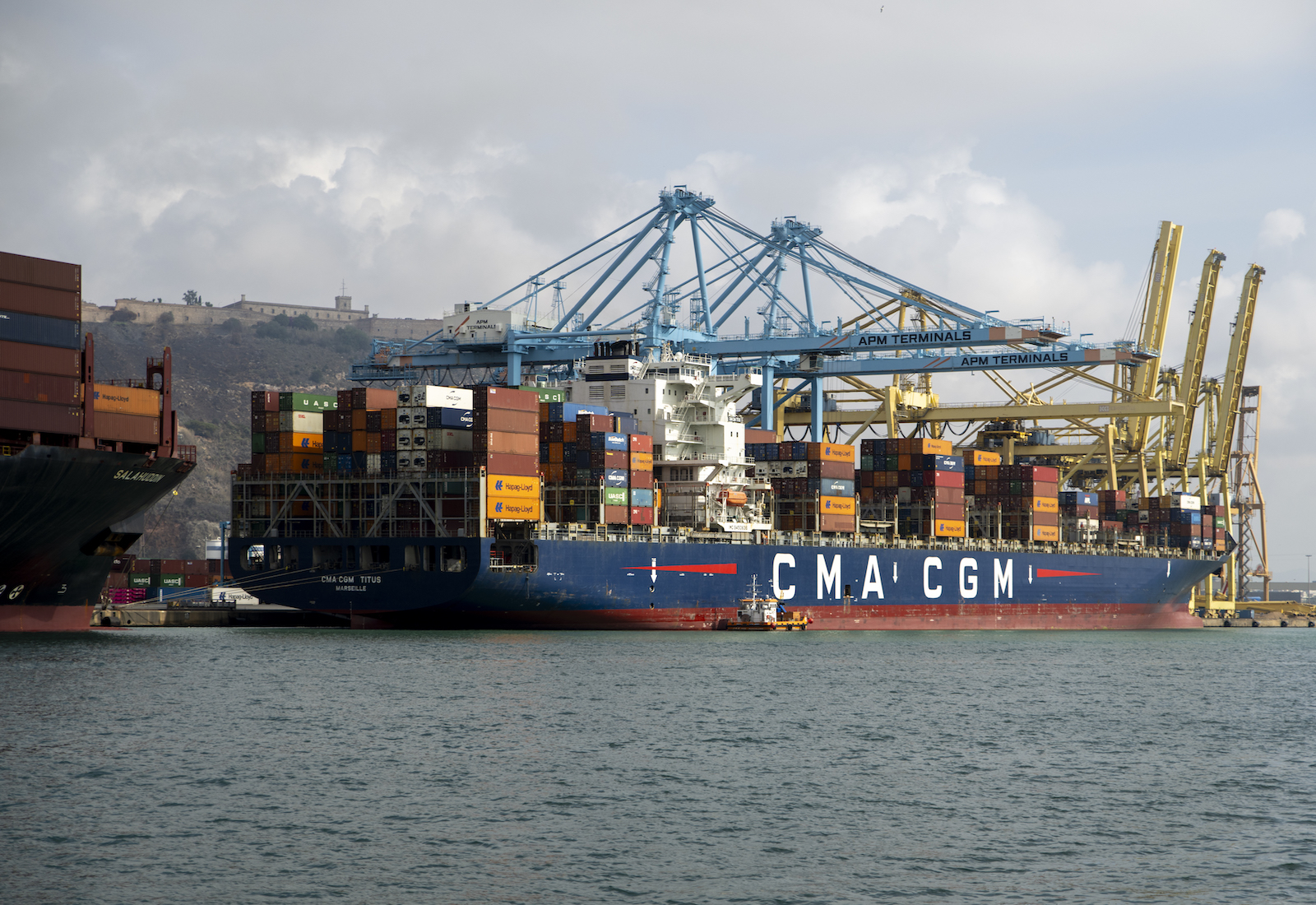
The International Maritime Organization, or IMO — the United Nations body in charge of regulating the global shipping industry — wrapped up two weeks of negotiations on Friday with an agreement that the industry should reach net-zero greenhouse gas emissions “around” 2050.
That’s an improvement over the IMO’s previous climate target for the sector — to merely halve emissions by midcentury — but it’s left many environmental advocates severely disappointed.
“There is no excuse for this wish-and-a-prayer agreement,” John Maggs, president of the Clean Shipping Coalition, said in a statement. Others called it a “historic failure” and a “wishy-washy compromise.”
Negotiators sealed the deal on Friday following 10 days of heated discussions meant to address the shipping industry’s outsize carbon footprint. Cargo ships, which carry goods and materials across oceans and are responsible for almost all international trade, account for about 3 percent of humanity’s overall carbon emissions — about as much as Germany.
In order to limit global warming to 1.5 degrees Celsius (2.7 degrees Fahrenheit) — the target countries agreed to in the 2015 Paris Agreement — experts have estimated that the shipping industry must cut emissions by 45 percent by 2030 before reaching near-zero emissions in 2040.
Those are the targets that a coalition of Pacific Island countries, plus a few allies including the United States and the U.K., were advocating for at the IMO summit. “Anything less than 36 percent by 2030 and 96 percent by 2040 will be detrimental” to reaching international climate goals, the Marshall Islands negotiator Albon Ishoda told journalists at the summit last week.
Instead, the agreement set a decarbonization deadline for “by or around, i.e., close to 2050,” with the justification that this would provide greater flexibility for poorer developing countries. (Countries will be responsible for setting policies to achieve the emissions reductions.) The final agreement also included interim targets for 2030 and 2040, although they are far less ambitious than what scientists and many developing countries had been hoping for. The nonbinding agreement asks the shipping industry to reduce emissions by at least 20 percent by 2030 and 70 percent by 2040. It says the industry should continue “striving” for greater reductions of 30 percent and 80 percent.

Lorena Sopena / Europa Press via Getty Images
“Nations failed to put the shipping industry on a credible, 1.5-degree C pathway,” said Madeline Rose, senior climate campaign director for the nonprofit Pacific Environment. She said the IMO’s agreed-upon strategy would exhaust the shipping industry’s carbon budget for limiting warming to 1.5 degrees by 2032, although individual governments and shipping companies could take more aggressive action to prevent that from happening.
Several groups said the only reason there were any interim targets at all was because of a handful of negotiators from small island states, including Vanuatu and the Marshall Islands. These negotiators, whose countries are particularly sensitive to sea-level rise and other climate impacts, eked out stronger targets in the face of heavy opposition from oil-exporting countries like Saudi Arabia, which stand to gain from continued reliance on a fossil fuel-powered shipping sector.
Larger developing countries like Brazil and Argentina also argued that any reduction in climate pollution would cause them disproportionate economic harm — despite evidence to the contrary. A widely cited report published late last month found that existing solutions — some as simple as reducing ships’ speeds — could reduce global shipping emissions by up to 47 percent below 2008 levels by 2030, with minimal impacts to global trade.
Other solutions in the report, published by the consulting firm CE Delft, include adopting wind-assisted propulsion technologies and replacing 5 to 10 percent of ships’ heavy fuel oil with zero-emissions alternatives like green hydrogen and green methanol.
Maggs said countries baselessly refuted the report and others like it as if they were in a “Trumpian, post-truth alternative reality.” He said the shared desire to come to some kind of agreement gave the obstructionist countries outsize negotiating power. Delegates were “prepared to put up with a weak agreement,” he said, so long as they produced something by the end of the summit.
In addition to the emissions targets, the IMO’s agreement reached on Friday also includes a “basket of measures” to help them reach the new goals. One is an international fuel standard for greenhouse gases, similar to what the IMO has already adopted for sulfur oxide pollution. The other is a global levy on shipping emissions that could generate revenue to fund the shipping industry’s transition away from heavy fuel oil. Both measures are set to be designed in greater detail over the coming years, with implementation scheduled for no later than 2027.

CFOTO / Future Publishing via Getty Images
The levy in particular proved controversial, and many consider its inclusion in the agreement a major success. More than 70 developing and developed countries supported it, while Brazil, Argentina, and China, the world’s largest exporter, led a coalition to oppose it. In a diplomatic note delivered to developing countries last month, Beijing officials said the levy was “a disguised way by developed countries to improve their own market competitiveness.”
None of the IMO’s newly agreed-upon targets are mandatory, meaning the onus will now fall on member states for compliance and enforcement. Many environmental advocates are hopeful that national policies will nudge the shipping industry to decarbonize faster, although this will likely lead to a more confusing tangle of standards than if the IMO had unified countries around a single set of science-based targets. “It’s not ideal,” said Delaine McCullough, shipping emissions campaign manager for the nonprofit Ocean Conservancy. “But it needs to happen.”
In the U.S., for example, the recently introduced federal Clean Shipping Act would set emissions standards for shipping companies that dock at American ports, requiring them to align with a pathway toward net-zero by 2040. Other proposed laws like the International Maritime Pollution Accountability Act, which would place a pollution fee on large ships unloading cargo at U.S. ports, could serve as policy models on the international stage.
Individual cities and ports can implement similar regulations on their own, before federal policies are passed. Freight companies can take action too. The shipping giant Maersk, for example, is aiming for net-zero by 2040 and has committed not to buy new ships unless they can run on carbon-neutral fuel. It recently announced the world’s first effort to retrofit a fossil fuel-powered ship to run on green methanol.
“[T]he time to act is now,” Marie Cabbia Hubatova, global shipping director for the nonprofit Environmental Defense Fund, said in a statement. “This is our last chance to get shipping close to Paris Agreement alignment and set the standard for other hard-to-abate sectors.”
This story was originally published by Grist with the headline UN sets ‘wishy-washy’ climate target for global shipping industry on Jul 7, 2023.




